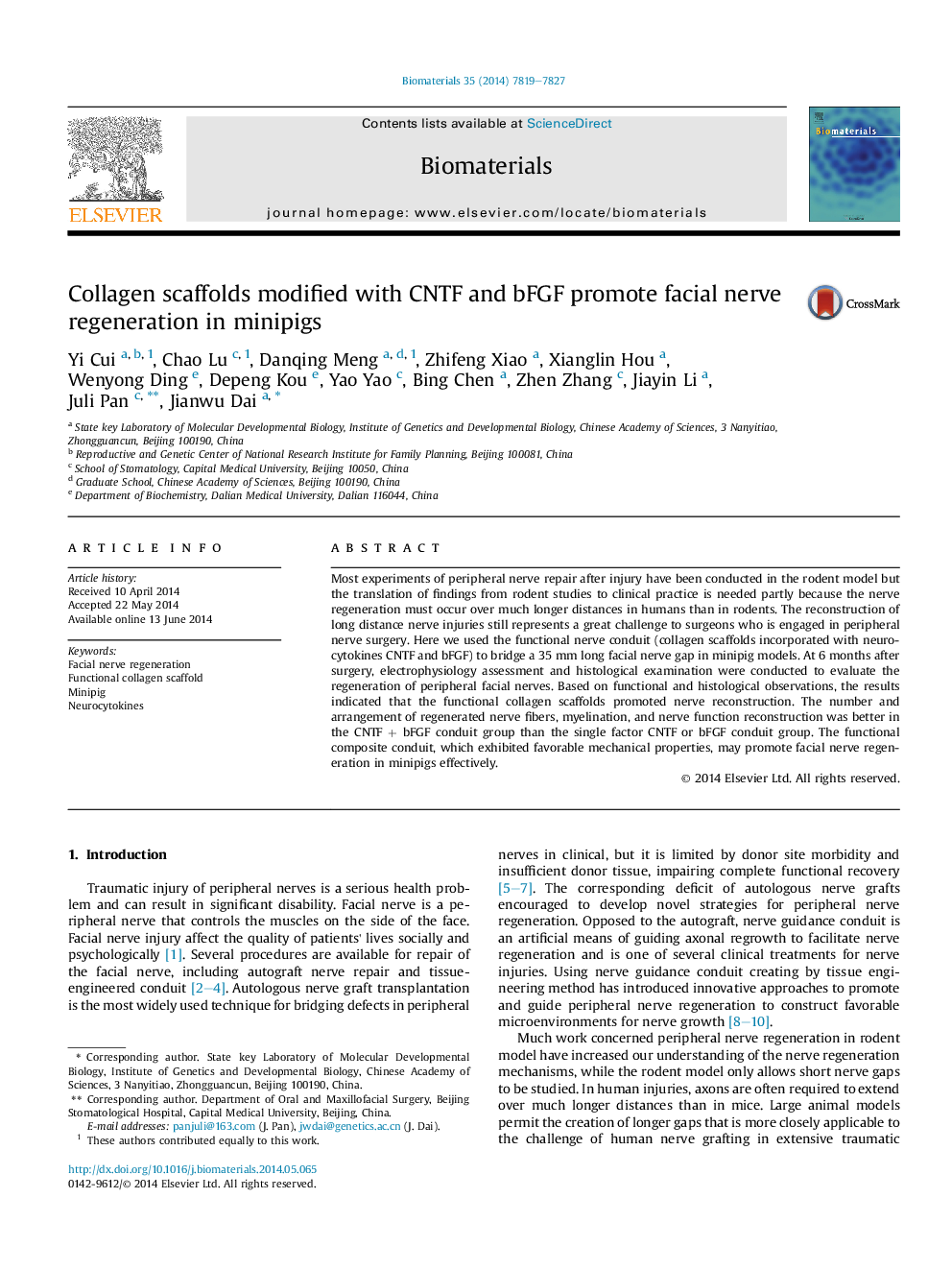| Article ID | Journal | Published Year | Pages | File Type |
|---|---|---|---|---|
| 5866 | Biomaterials | 2014 | 9 Pages |
Most experiments of peripheral nerve repair after injury have been conducted in the rodent model but the translation of findings from rodent studies to clinical practice is needed partly because the nerve regeneration must occur over much longer distances in humans than in rodents. The reconstruction of long distance nerve injuries still represents a great challenge to surgeons who is engaged in peripheral nerve surgery. Here we used the functional nerve conduit (collagen scaffolds incorporated with neurocytokines CNTF and bFGF) to bridge a 35 mm long facial nerve gap in minipig models. At 6 months after surgery, electrophysiology assessment and histological examination were conducted to evaluate the regeneration of peripheral facial nerves. Based on functional and histological observations, the results indicated that the functional collagen scaffolds promoted nerve reconstruction. The number and arrangement of regenerated nerve fibers, myelination, and nerve function reconstruction was better in the CNTF + bFGF conduit group than the single factor CNTF or bFGF conduit group. The functional composite conduit, which exhibited favorable mechanical properties, may promote facial nerve regeneration in minipigs effectively.
